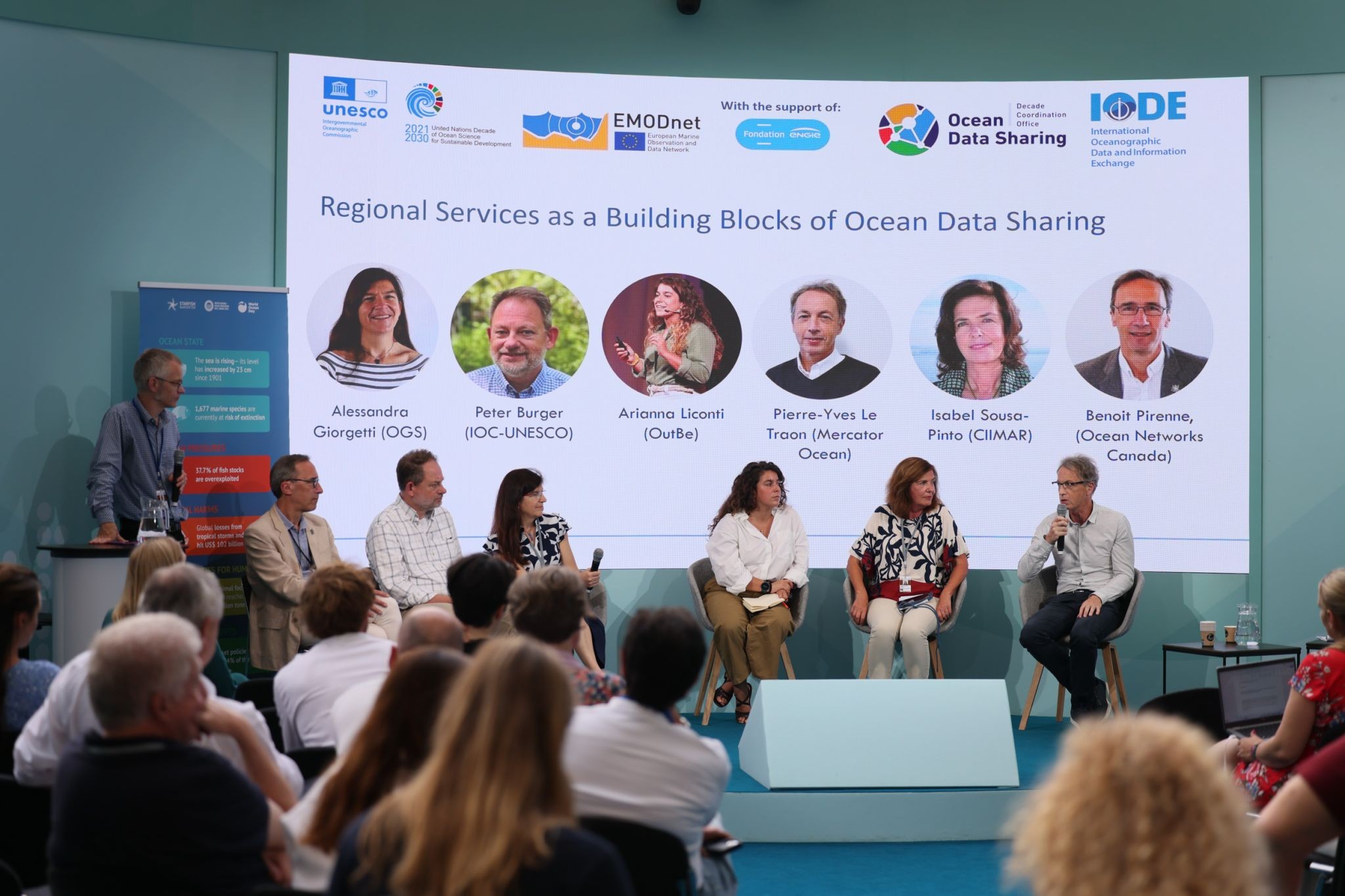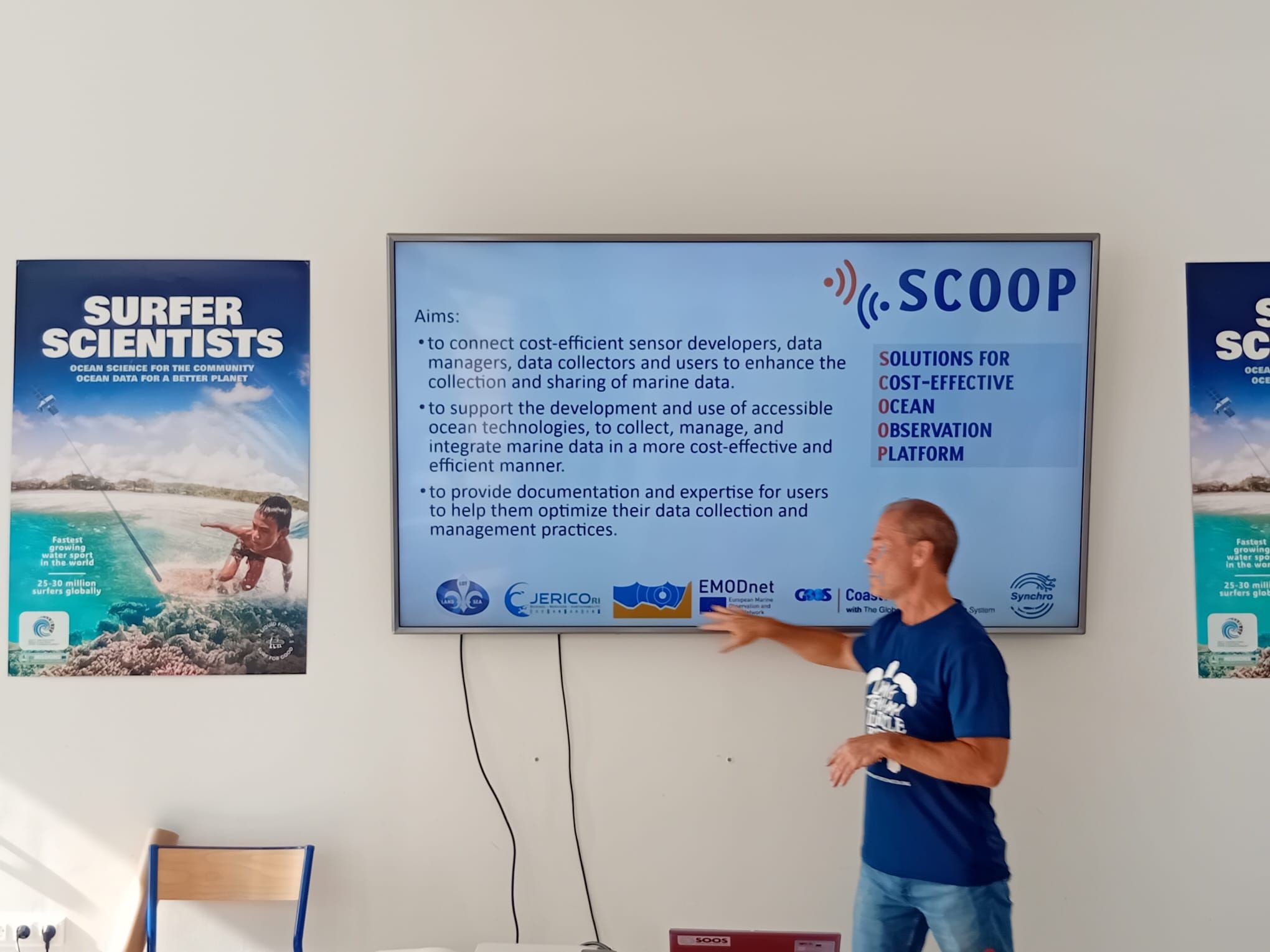EMODnet was prominently featured at the One Ocean Science Congress and the UN Ocean Conference in Nice from 2–13 June 2025. With participation from EMODnet thematic coordinators, expert partners and the Secretariat, the events highlighted EMODnet’s significant contributions to global marine knowledge and the digital transformation of ocean data systems.
The One Ocean Science Congress (OOSC) focused on advancing sustainable ocean science and featured poster contributions from EMODnet Chemistry, Geology, and Physics. These showcased how EMODnet’s thematic data services support evidence-based ocean management, monitoring, and research.
Explore all EMODnet posters and highlights from the OOSC.
Following the Congress, UNOC3 (9–13 June) brought together a wide range of stakeholders to accelerate action on SDG 14: Life Below Water. One of the most notable contributions was EMODnet’s co-organisation of a workshop with the UN Ocean Decade’s Decade Coordination Office for Ocean Data Sharing at the European Digital Ocean Pavilion. The session, “Regional Services as a Building Block of Global Ocean Data Sharing,” featured EMODnet Chemistry Coordinator Alessandra Giorgetti (OGS) and showcased how European regional data infrastructures like EMODnet and Copernicus Marine Service deliver FAIR (Findable, Accessible, Interoperable, Reusable) data through international cooperation and mandates.

Figure 1. Session at European Digital Pavillion, “Regional Services as a Building Block of Global Ocean Data Sharing,” ©Mercator Ocean International, Philipe Fitte
Another key highlight of UNOC 2025 was the European Digital Twin Ocean (EU DTO), developed under the EDITO initiative, which demonstrated how EMODnet makes marine knowledge openly accessible and usable. As the in situ data backbone of the EU DTO, EMODnet operates ‘on the cloud,’ bringing harmonised, FAIR data into the digital twin and reinforcing its status as a regional cornerstone of the global ocean data ecosystem and a contributor to the UN Ocean Decade Digital Twins of the Ocean initiative.
The visibility of the EU DTO reached new heights with a landmark visit from European Commission President Ursula von der Leyen, who explored the platform in the INSPIRE Area of the European Digital Ocean Pavilion. Through interactive, science-based visualisations, the President experienced first-hand how the EU DTO supports ocean climate action, biodiversity protection, and sustainable blue economy development—reinforcing Europe’s global leadership in ocean digitalisation.
Complementing this moment, EMODnet took part in two high-level sessions in the INSPIRE Area: “Towards a Fit-for-Purpose European Ocean Observing System (EOOS) for a Successful EU Ocean Pact” and “Presentation of the EU Ocean Pact.” These events showcased EMODnet’s vital role in transforming in situ ocean observations into harmonised data products, positioning both EMODnet and EOOS as foundational pillars of Europe’s ocean knowledge and governance landscape.
EMODnet Chemistry’s contributions were also further showcased throughout both OOSC and UNOC3. Coordinator Alessandra Giorgetti contributed a poster presentation on EMODnet as an EU provider of FAIR, integrated marine data, and gave a talk on EMODnet’s marine litter services, emphasising harmonised approaches to pollution monitoring. She also co-chaired a scientific session on plastic pollution, reinforcing the science-policy interface and further linking thematic expertise with global ocean goals. More insights are available via NODC’s event coverage.
EMODnet’s support for grassroots data initiatives was also evident at a dedicated side event led in collaboration with EMODnet Physics Coordinator Patrick Gorringe (SMHI). The session highlighted citizen science in marine data collection, featuring initiatives such as SCOOP, LandSeaLot, and CSMACH1, as well as efforts in Cabo Verde, Indonesia, and Brazil. Using low-cost sensors, “surfer scientists” collected in situ ocean temperature data, which will feed into EMODnet’s open-access infrastructure—demonstrating how inclusive science can expand data coverage.

Figure 2. EMODnet Physics Coordinator Patrick Gorringe (SMHI) presenting at the “Surfer Scientists paddle session at UNOC3” ©EMODnet Secretariat
The overarching message from both events was clear: it is time to move beyond simply sharing data. Harmonising knowledge, improving metadata, and supporting legal frameworks for sensitive data types are essential. With the pace of technological innovation accelerating, best practices must keep up. EMODnet remains at the forefront, enabling interoperable, accessible, and impactful marine data for Europe and beyond.
